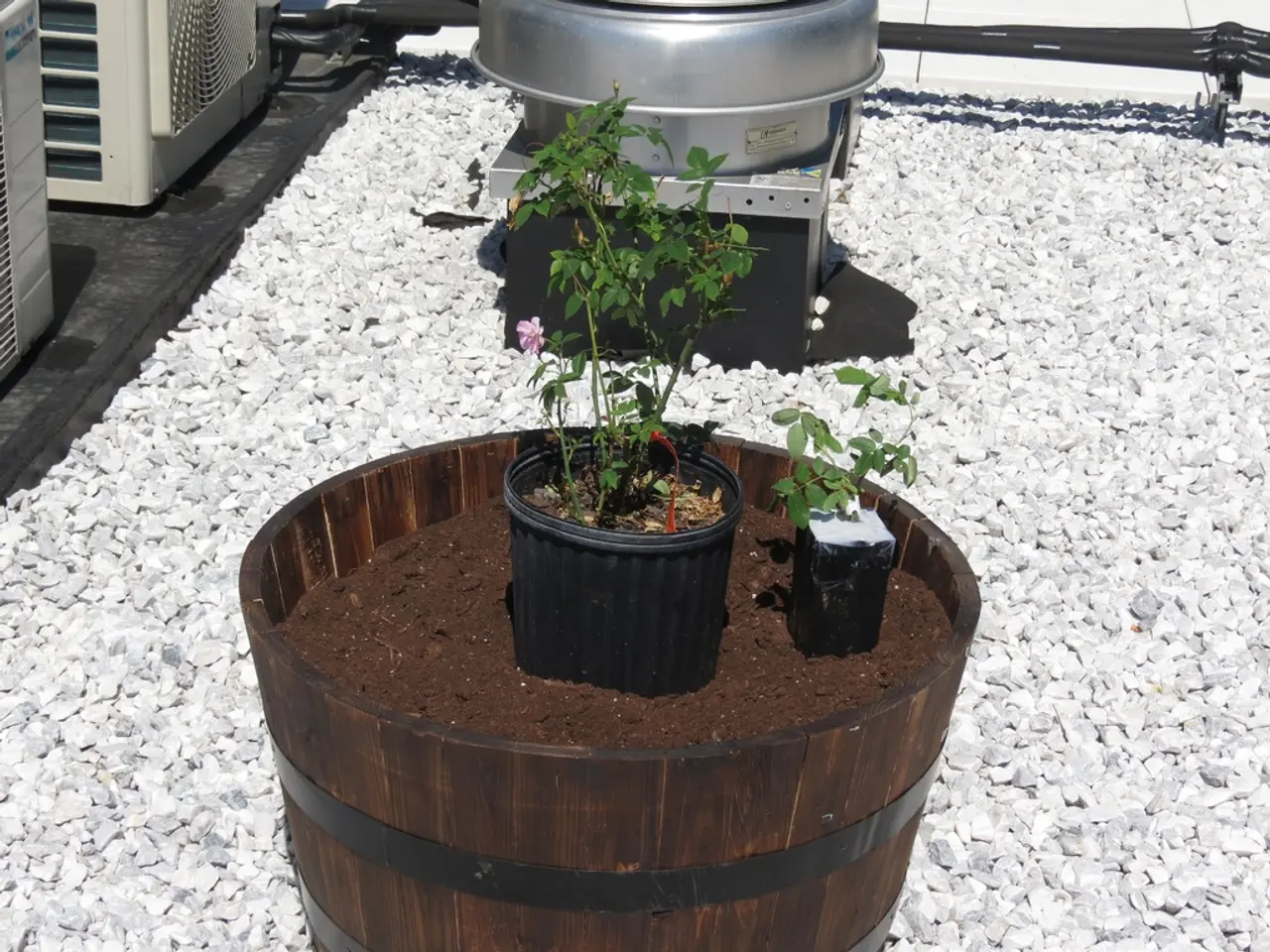Crafting Perfect Soil Composition: A Comprehensive Guide for Vibrant Vegetation
Gardening enthusiasts and home growers alike understand the importance of soil in nurturing healthy plants. Different types of plants have specific soil requirements based mainly on soil texture, composition, pH, drainage, and nutrient content, which influence their growth and health.
Loamy Soil
Loamy soil, a balanced mixture of sand, silt, and clay with about 5-10% organic matter, is generally considered the best soil type for most plants, especially home gardens and crops. It offers good drainage, nutrient retention, and root penetration, suitable for a wide range of vegetables, flowers, fruits, and other plants.
Clay Soil
Clay soil, which is fine-textured and holds nutrients and water strongly, can become compacted and restrict root growth. It is suitable for plants that tolerate wet conditions but may require amendments for others to improve aeration and drainage.
Sandy Soil
Sandy soil has large particles and excellent drainage but low nutrient and water-holding capacity. It is ideal for plants that prefer drier, well-drained conditions, such as cacti and succulents. It often needs organic amendments to enhance fertility.
Silty Soils
Silty soils have a fine texture with balanced water retention and drainage; they are fertile and support crops like strawberries and trees such as oaks. However, erosion can be a problem on slopes, so cover crops and mulch are recommended.
Volcanic Soils
Volcanic soils are mineral-rich, fertile soils supporting agriculture such as wine grapes and native flora. These soils are good for crops needing high nutrient availability but may require erosion control on slopes.
pH Preferences
Most plants prefer soils that are neither very acidic nor very alkaline; Western U.S. soils tend to be alkaline, so plants adapted to neutral to slightly alkaline soils will perform better.
Ideal Soil Mixture
The ideal soil mixture for plants should consist of organic matter, sand, perlite, and vermiculite. For plants that require well-drained soil, such as cacti and succulents, a lighter mix with more perlite or sand is needed.
Soil Testing
Soil testing is recommended every 3 to 5 years to make informed decisions about fertiliser and soil amendments, diagnose and correct plant problems, and enhance plant growth. Soil testing can be done through home test kits or by sending a soil sample to your local county extension office for professional testing.
Examples of Preferred Soil Characteristics
| Plant Type | Preferred Soil Characteristics | Notes | |----------------------|--------------------------------------------------------------|------------------------------------------| | Vegetables & Flowers | Loamy soil, balanced texture, good drainage, moderate pH | Optimal for nutrient and water uptake | | Grapes (Wine) | Fertile volcanic or well-drained loams | Requires mineral-rich soil | | Oaks & Native Trees | Silty or foothill soils with good drainage and moderate fertility | Native species adapted to local soil types | | Succulents & Cacti | Sandy, coarse-textured, fast-draining soils | Poor nutrient retention, so low water needs| | Clay-loving plants | Clay soils with good moisture retention | May need soil aeration improvement |
Urban Soils
Urban soils tend to be compacted and low in organic matter, requiring remediation for gardening, and may have contamination risks, so soil testing is critical.
Additional Tips
- Earthworms, beneficial microorganisms, and mycorrhizae can be added to the soil to improve soil health and support plant growth.
- Before placing potting mix into the container, clean and dry it thoroughly with a weak bleach solution.
- Slow-release fertiliser can be added to provide extra nutrients for the plants.
- A pH meter can be used to test the acidity and alkalinity of the soil.
By understanding the specific soil requirements of different plants, gardeners can create the perfect growing conditions for their plants, leading to healthier, more vibrant gardens.
- A balanced lifestyle embraces not only the care for plants in gardening but also the consideration of soil health, as the nutrient-rich soil nourishes the plants and contributes to the overall aesthetic appeal and vitality of food-and-drink, home-and-garden, and fashion-and-beauty elements in one's home.
- For those pursuing education-and-self-development, learning about various soil types and their characteristics, such as loamy, clay, sandy, silty, and volcanic, can broaden one's knowledge in agricultural sciences and potentially inspire innovative, sustainable food production systems.
- With the increasing popularity of healthy, home-cooked meals made from fresh, organically grown ingredients, lifestyle enthusiasts might find it rewarding to learn about soil testing, ideal soil mixtures, and additional tips, such as adding earthworms and beneficial microorganisms, to ensure their home gardens produce clean and nutrient-rich food-and-drink options.




